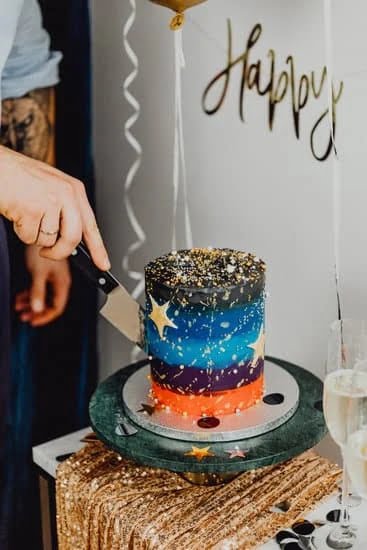Fruit cakes have played a significant role in various cultures and traditions around the world for centuries. Whether it’s during Christmas, weddings, or other special occasions, fruit cakes hold a special place in many people’s hearts. In this article, we will explore the art of decorating a fruit cake and delve into the rich tradition and significance of fruit cakes in different cultures.
The concept of fruit cakes dates back to ancient times, with each culture adding its own unique twist to this beloved dessert. From the rich and boozy fruitcakes popular in England to the lighter and citrus-infused versions enjoyed in Mediterranean countries, fruit cakes come in a wide variety of flavors and styles.
In this section, we will not only uncover the historical and cultural significance of fruit cakes but also provide valuable insights on how to choose the right type of fruit cake for decorating. Whether you prefer a dense and nutty fruit cake or a lighter sponge cake studded with fruits, understanding the nuances of different types of fruit cakes is crucial when it comes to decorating them.
So let’s dive into the world of fruit cakes and discover how to elevate their appearance with stunning decorations.
Choosing the Right Fruit Cake
When it comes to choosing the right fruit cake for your decorating endeavors, it’s essential to consider the different types available and their unique flavor profiles. Here are some popular options to consider:
- Traditional Fruit Cake: This classic choice is packed with dried fruits such as raisins, currants, and candied peel, soaked in alcohol for added richness.
- Light Fruit Cake: A lighter alternative to the traditional version, this fruit cake contains fewer dried fruits and is often flavored with citrus zest for a refreshing taste.
- Dark Fruit Cake: As the name suggests, this type of fruit cake includes darker-colored ingredients like molasses or brown sugar, giving it a rich, caramel-like flavor.
Once you’ve decided on the type of fruit cake you want to decorate, consider the flavor profile that best suits your preferences and occasion. Traditional fruit cakes are often associated with holidays and special celebrations due to their rich and indulgent nature. On the other hand, light or dark fruit cakes may be more suitable for everyday enjoyment or as part of a dessert spread.
Understanding the different types of fruit cakes and their flavor profiles will help you make an informed decision when selecting a base for your decorative masterpiece. It’s important to choose a cake that not only complements your design vision but also delights your taste buds when it’s time to indulge in the finished product.
Essential Ingredients and Equipment
When it comes to decorating a fruit cake, having the right ingredients and equipment is essential for achieving a professional and visually appealing result. Whether you are a seasoned baker or a novice in the kitchen, ensuring that you have all the necessary items on hand will make the decorating process much smoother.
Ingredients
The key ingredients for decorating a fruit cake include royal icing, marzipan, fondant, and edible decorations such as sprinkles, edible glitter, and decorative sugar pearls. Royal icing is ideal for creating intricate designs and piped decorations, while marzipan and fondant can be used to cover the cake and create smooth, polished surfaces for intricate designs.
In addition to these decorative elements, it’s important to have a well-prepared fruit cake as your base. This includes using high-quality dried fruits such as raisins, currants, and candied peel, as well as soaking them in liquor or fruit juice to infuse them with flavor before baking.
Equipment
Having the right equipment is crucial for executing your desired decoration techniques. Essential tools include offset spatulas for spreading icing or fondant, piping bags and tips for intricate designs or lettering, and rolling pins for flattening marzipan or fondant. Additionally, having a turntable can make the process of applying icing or fondant smoother and more even.
Other useful tools include modeling tools for shaping fondant decorations, edible glue for adhering decorative elements to the cake, and a sharp knife for trimming excess fondant or marzipan. Having these tools at your disposal will streamline the decorating process and help you achieve professional-looking results.
Prepping the Fruit Cake
After selecting the perfect fruit cake for your decorating project, the next step is to properly prep it for decoration. This involves a few key steps to ensure that your finished product looks and tastes its best. The first step is to level the cake, ensuring that it has an even surface for decorating. This can be done using a serrated knife or a cake leveler tool.
Once the cake is leveled, the next important step is to crumb-coat the cake. Crumb-coating helps to seal in any loose crumbs and provides a smooth base for your decorative icing or fondant. To crumb-coat a fruit cake, simply spread a thin layer of frosting or buttercream over the entire surface of the cake, trapping any loose crumbs in the process.
After crumb-coating, it’s important to allow the cake to set before moving on to the final decorative steps. This will ensure that your decorations go on smoothly and stay in place. Taking these extra steps in prepping your fruit cake will make all the difference in achieving professional-looking results when it comes time to decorate.
| Prepping Steps | Description |
|---|---|
| Leveling | Ensuring an even surface with a serrated knife or cake leveler tool |
| Crumb-Coating | Sealing in loose crumbs with a thin layer of frosting or buttercream |
| Setting Time | Allowing the crumb-coated cake to set before decorating |
Decorative Techniques
When it comes to decorating a fruit cake, there are various techniques that can be used to create beautiful and stunning designs. Piping is a popular method for adding intricate details and patterns to a fruit cake. By using a piping bag and different tips, decorators can create elaborate borders, floral designs, lettering, and more. This technique requires practice and precision but can result in impressive and professional-looking decorations.
Fondant work is another popular way to decorate a fruit cake. Fondant is a type of icing that can be rolled out and draped over the cake to create a smooth and seamless surface. Decorators can use fondant to create 3D shapes, cover the entire cake, or add decorative accents such as flowers, bows, and other embellishments. With the right tools and techniques, fondant work allows for endless possibilities in terms of design and creativity.
Icing designs also play a significant role in decorating a fruit cake. Royal icing, which is made from powdered sugar and egg whites or meringue powder, can be used to create intricate designs such as lace patterns, intricate borders, and delicate details. Additionally, buttercream icing offers versatility in terms of textures and colors, allowing decorators to create beautiful rosettes, swirls, ruffles, and other decorative elements on the fruit cake.
Using these decorative techniques mentioned above allows individuals to channel their creativity into creating personalized designs that will undoubtedly elevate the visual appeal of their fruit cakes. Whether it’s piping delicate details, working with fondant for 3D decorations or using various icing designs – mastering these methods will lead to stunning results that will impress friends & family members.
Creative Fruit Arrangements
When it comes to decorating a fruit cake, incorporating fresh or dried fruits as decorative elements can add a unique and visually appealing touch to the final product. Whether you’re looking to create an elegant design or a more whimsical arrangement, there are several creative ways to integrate fruits into your cake decoration. Here are some ideas to inspire your fruit cake decorating endeavors:
- Fresh Fruit Toppings: Consider using sliced strawberries, kiwi, raspberries, or blueberries to create vibrant and eye-catching toppings for your fruit cake. These fresh fruits not only add a pop of color but also provide a juicy and refreshing contrast to the denser texture of the cake.
- Dried Fruit Inlays: Using dried fruits such as apricots, cranberries, figs, or cherries to create inlays on the surface of the cake can provide an elegant and sophisticated look. Arrange the dried fruits in geometric patterns or organic shapes for a visually stunning effect.
- Fruit Coulis Drizzles: Incorporating fruit coulis drizzles onto the frosted surface of the cake can introduce a burst of flavor and artistic flair. Choose complementary fruit flavors like mango, passionfruit, or blackberry to create enticing designs and enhance the overall taste experience.
In addition to these ideas, consider experimenting with different fruit combinations and arrangements that align with your personal style or the theme of the occasion. Whether you’re aiming for a classic and timeless look or a more contemporary and innovative design, showcasing creative fruit arrangements on your fruit cake can elevate its aesthetic appeal while delivering delightful bursts of natural sweetness.
Keep in mind that when working with fresh fruits as decorative elements on a cake, it’s important to consider their shelf life and potential for oxidation. Furthermore, ensuring that all fresh fruits are thoroughly washed and dried before use is essential for food safety. By carefully selecting and arranging various fruits on your fruit cake, you can infuse it with both visual interest and delectable flavors that will leave a lasting impression on those who partake in its enjoyment.
Design Inspiration
Seasonal Themes
One of the most popular ways to decorate a fruit cake is by incorporating seasonal themes. For example, during the winter holidays, you can adorn your fruit cake with edible snowflakes made from royal icing or sugared cranberries for a festive touch. In the spring, consider using fresh flowers as a decorative element on your fruit cake, such as edible pansies or lavender.
During the summer months, opt for bright and vibrant fruits like berries and citrus slices to add color and freshness to your cake. And in the fall, you can use autumnal elements like edible gold leaf or marzipan pumpkins to create a cozy and inviting look.
Special Occasions
When it comes to special occasions, the possibilities for decorating a fruit cake are endless. For weddings, consider elegant and intricate designs using fondant or delicate sugar flowers to match the bridal theme. For birthdays, you can personalize the decoration with the recipient’s favorite fruits or incorporate fun and vibrant colors to reflect their personality.
For anniversaries, consider incorporating traditional symbols of love such as hearts or intertwining vines made from sugar paste. And for other celebrations like graduations or retirements, personalized messages or edible photo prints can be added to make the fruit cake truly special.
Customized Designs
In addition to seasonal themes and special occasions, there is also an opportunity to create customized designs based on personal preferences or interests. For example, if someone loves gardening, then decorating the fruit cake with fondant vegetables and fruits can be a unique and personalized touch.
Or for sports enthusiasts, creating a football-shaped fruit cake complete with team colors and logos can be an exciting addition to game day celebrations. The key is to let creativity flow and let personal tastes guide the design process when it comes to decorating a fruit cake for any occasion.
Professional Tips and Tricks
Decorating a fruit cake like a professional baker can seem like a daunting task, but with the right tips and tricks, anyone can achieve beautiful and professional-looking decorations. One key piece of advice from experts is to ensure that your fruit cake is completely cooled before beginning the decoration process. This will prevent any icing or fondant from melting or becoming too soft, leading to a messy finished product.
Another important tip is to invest in quality decorating tools. Professional bakers recommend using piping bags with various tips for different designs, as well as offset spatulas for smooth icing application. These tools can make a significant difference in the outcome of your decorated fruit cake.
When troubleshooting common decoration issues, such as uneven icing or fondant that tears easily, it’s crucial to have patience and practice. If your icing appears lumpy or uneven, try using a hot spatula to smooth it out. For fondant that tears, gently knead it and add a small amount of shortening to soften it before rolling it out again.
Overall, achieving professional-looking fruit cake decorations takes practice, patience, and attention to detail. By following expert advice and learning from trial and error, home bakers can create stunning and impressive decorative finishes for their fruit cakes.
| Decorating Tip | Description |
|---|---|
| Ensure Cake is Cooled | Allow the fruit cake to completely cool before decorating to prevent melted or softened icing/fondant. |
| Invest in Quality Tools | Use piping bags with various tips and offset spatulas for professional results. |
| Troubleshooting Tips | If experiencing issues, use hot spatula for icing or knead fondant with some shortening to correct tears. |
Conclusion
In conclusion, fruit cakes have a long-standing tradition in various cultures and are often associated with special occasions and celebrations. Their dense and moist texture, combined with the rich flavors of candied fruits and nuts, make them a beloved dessert choice for many. When it comes to decorating a fruit cake, there are numerous creative possibilities to explore, from intricate design techniques to unique fruit arrangements that add both beauty and flavor to the finished product.
As we have discussed in this article, choosing the right type of fruit cake is essential for achieving the desired flavor profile, whether it’s a light sponge cake or a more decadent dark fruit cake. Additionally, having the necessary ingredients and tools on hand, along with proper preparation techniques such as leveling and crumb-coating, is crucial for successful decoration.
Exploring decorative techniques like piping, fondant work, and icing designs can help elevate the visual appeal of the fruit cake, while incorporating fresh or dried fruits as part of the design adds an extra touch of creativity.
Ultimately, decorating a fruit cake can be a rewarding experience that allows for personal expression and artistry in the kitchen. Whether it’s for a holiday gathering or a milestone celebration, trying your hand at creating a beautifully decorated fruit cake at home is definitely worth the effort.
With some practice and patience, along with the inspiration provided in this article, readers can showcase their own unique spin on fruit cake decorations and delight their friends and family with a stunning and delicious centerpiece for any occasion.
Frequently Asked Questions
How Do You Decorate a Fruit Cake?
Decorating a fruit cake can be done in various ways. Common methods include icing the cake with royal icing, covering it with fondant, or simply dusting it with powdered sugar for a simple yet elegant look. Additionally, adding glazed fruits, edible flowers, or nuts can provide a beautiful and colorful decoration to the fruit cake.
How to Decorate a Fruit Cake Without Marzipan?
Decorating a fruit cake without marzipan is still possible and can yield beautiful results. Instead of using marzipan, consider using a glaze made of apricot jam or marmalade to cover the cake before decorating it. This will provide a sticky surface for any additional decorations such as sliced fruits, nuts, or even a light dusting of powdered sugar.
What Do You Cover Fruit Cake With?
Fruit cakes can be covered with various toppings depending on personal preference and dietary restrictions. Some popular options include royal icing, fondant, or a simple glaze made of apricot jam or marmalade. These coverings not only add to the overall presentation of the cake but also help preserve its moistness and flavor over time.

Welcome to our cake decorating blog! My name is Destiny Flores, and I am the proud owner of a cake decorating business named Cake Karma. Our mission is to provide delicious, beautiful cakes for all occasions. We specialize in creating custom cakes that are tailored specifically to each customer’s individual needs and tastes.





